Are you great with cars but have no idea how to open a mechanic shop? Don’t worry! We’re going to show you how to open a mechanic shop.
Lucky Sing started his car repair business, Lucky’s Auto Repair, with $20,000 in 2016 and earns twice that every month. He shared business advice, technology costs, unique marketing strategies he uses, and how to delight your customers.
Get ready to learn how to start a mechanic shop.
Develop Repair Shop Knowledge
Before you start an auto repair shop, you’ll want to learn about the mechanic shop business. You’ll need to develop both industry knowledge and technical skills. We’ll look at each of them to help you prepare to open your own auto repair business.
Industry Information
You’ll want to understand how auto repair shop owners operate, what types of challenges they face, and the financial considerations that go into running an automotive repair shop. We use IBIS World for our data on industries because it provides all the information you need for competitor analysis in one place. You can find auto mechanics under the report for NAICS code 81111.
Major Players
Automobile repair shops have a lot of competition. They have seven major competitors that operate in their field.
- TravelCenters of America
- Monro
- TBC Corporation
- Love’s Travel Stops & Country Stores, Inc.
- Meineke Car Care Centers, LLC
- The Boyd Group Inc.
- NationaLease
In addition, they may also compete with:
- New car dealerships
- Oil changes services
- Used car dealerships
- Automotive part supply shops
These major players account for over 7% of the market share and $5.6 billion of the $78.4 billion industry revenue and $417.7 million out of the $4.9 billion revenue. The highest profit margins for the companies are approximately 7.7%.
The rest of the revenue and profits are shared by approximately 278,000 businesses.
Automobile Repair Shop Revenue
The average auto repair shop makes $261,870.50 per year, while the revenue per employee tends to be between $115K and $132K per employee. Assuming you start by yourself, you might make about $10,000 per month. Check out the breakdown of what services generate the most revenue:
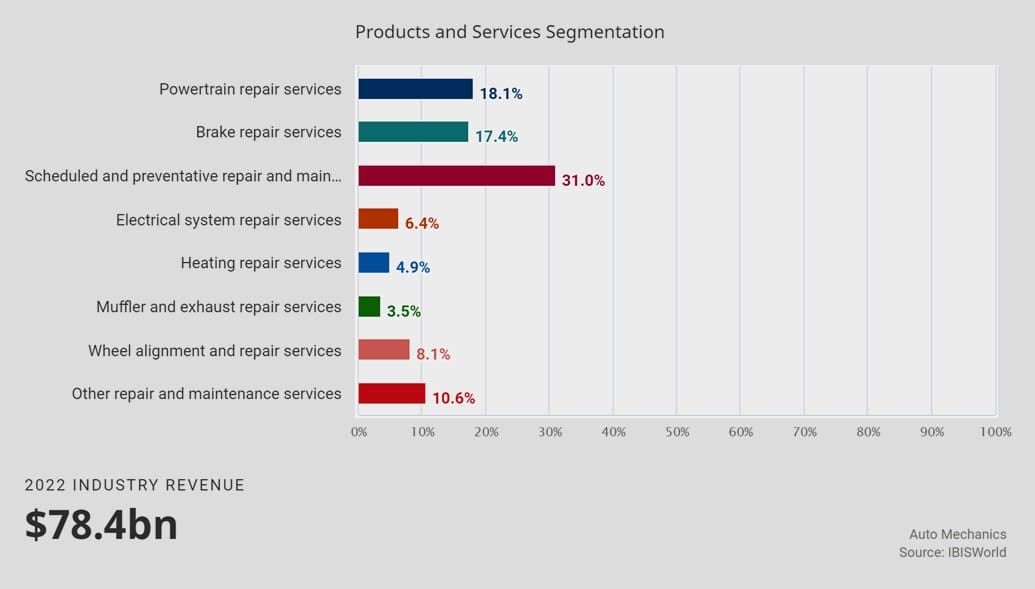
You should also be aware that businesses and consumers under 45 years old generate the most revenue.
Lucky Sing told us he was on track to make over $500,000 with three employees in 2022. That means he was making around $125,000 per employee (including himself).
Operating Expenses
The operating expenses for auto repair businesses break down into the following:
- Other Costs: 46.7% (includes taxes, IT, professional services, repairs, and miscellaneous). Based on my reading of the entire report, it appears that parts are the majority of this. You should expect parts to be $1 out of every $3 earned on parts, but if you can reduce this to $1 in every $4, it will increase profits to triple the market average. That’s why an auto repair shop needs to call multiple vendors for the best price.
- Wages: 28.1% (Lucky says more like $40K per mechanic)
- Purchases: 9.5% equipment and tools
- Rent: 4.7%
- Marketing: 1.9%
- Depreciation: 1.6%
- Utilities: 1.2%
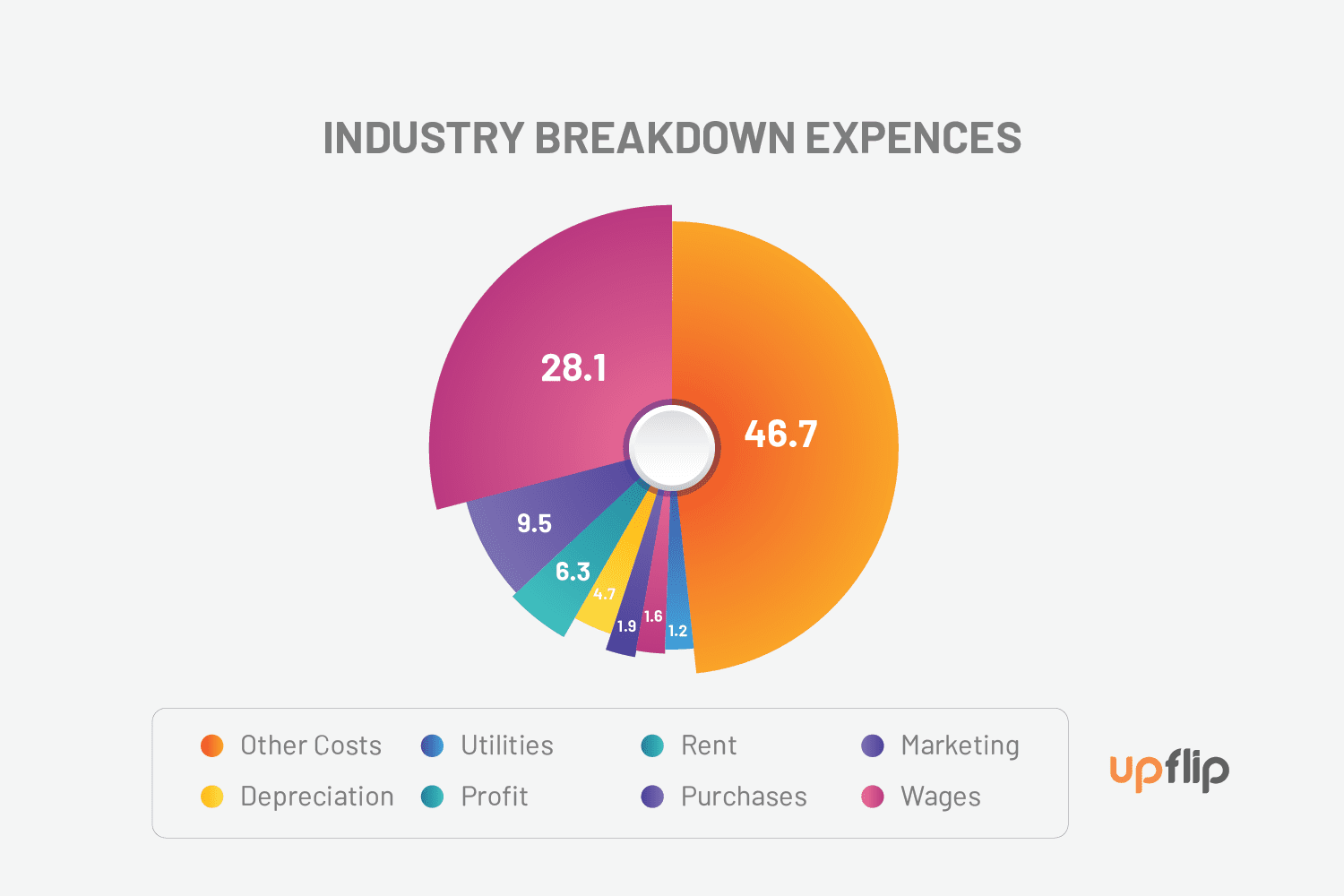
That is how car repair shops make 6.3% after tax profit.
Profit Margins
Profit margins for automobile businesses tend to be around 6.3%, but excluding the seven major players decreases to 6.16%. That means you are looking at $6,160 for every $100K in revenue. That’s consistent with what Lucky told us:
Check out our interview with Lucky below:
He collects a salary now, but he didn’t for the first few years. He told us
He also told us he aims for no profits because:
Obviously independent shops can beat the industry average profit margin. Later, we’ll share some of the strategies Lucky uses to get his high profit margins. Next, we’ll discuss what he does with the profits from his automotive repair shop.
What do you do with profits?

When we asked what mechanic shops do with business profits, Lucky told us:
He also told us that his auto repair shop’s busiest months are June, July, and August, and the winters are slower. He warned that there were years he had to pay for payroll out of savings:
So don’t spend it all on a fat bonus after you pay quarterly taxes.
Educate Yourself
There are three ways to educate yourself on how to repair cars and provide maintenance services:
- Teach yourself to repair cars with YouTube videos.
- Attend technical school.
- Get a job at an auto mechanic shop.
No matter which you choose, Lucky emphasized the importance of getting your hands in the vehicle and learning to do it firsthand.
YouTube Videos About Cars

There are a ton of tutorials about engine repair, transmission repairs, auto-body repair, and anything else you could possibly want to know before opening a mechanic shop. There are more than 19,000 videos created by the top five channels when I search auto repairs on YouTube. I’m particularly impressed with 1A Auto’s playlists grouped by type of car.
Lucky told us:
Technical School
Lucky had a lot to say about going to a tech school. He went to one and told us:
He emphasized that he developed car repair and maintenance skills that would have been much more difficult to learn if you took the do-it-yourself shop approach.
His repair shop even invests in ongoing education for his mechanics. He told us:
He even recommended a company he suggests mechanic shop owners use:
If the investment in education doesn’t sound like the route for you, you can consider developing experience as an employee of an auto body shop, becoming an oil change mechanic, or finding a tire place to start developing experience. It will get your foot in the door, but it’s quicker if you go to technical school to learn more about the auto mechanic business.
Get a Job as a Mechanic

Small businesses across the country are suffering from an employment shortage. In fact, there are nearly 285,000 automotive jobs available on Indeed. You just have to reach out to auto mechanic shops and find one that will let you start. You are sure to find one looking for local car mechanics.
Do you need a mechanic license to open a shop?
You’ll need to get state and local business licenses. Still, if you’re wondering about a specific certification that states you know about car repair, most states don’t require that to start a small mechanic shop. Next has an article with state-by-state shop mechanic and repair shop certifications required for licensing.
You might want to consider some of the certifications for your mechanic garage because they certify that you know how to perform repairs. Car repair certifications are normally through three agencies:
- Automotive Service Excellence Certification (ASE): The ASE offers 58 Certifications for techs. They also offer a Blue Seal certification for shops with at least 75% ASE-certified techs and at least one ASE technician for each service. This gives you a high-quality backlink to your website, marketing materials, and more.
- I-Car Gold Class Certification: Shop owners might want to consider I-Car Gold certification if their car repair shop wants to be an automobile repair center. The certifications are a multi-year process that requires the majority of employees to be trained in specific vehicle repair shop knowledge.
- AAA Approved Auto Repair Facility: Triple A has really high requirements to become a certified repair shop for cars. You’ll need ASE certified technicians, a high Better Business Bureau rating, a 94% customer satisfaction rating based on a survey of mechanic garage clients, and more. Given each AAA site is different by region, this link or this one by region might be more direct. I got my information from RepairesHub.
Next, let’s look at planning a new business.
Business Plan for an Auto Repair Shop
You’ll have lots to keep track of, so it helps to write an auto repair shop business plan. The business plan helps you organize your thoughts and present them clearly and convincingly. The document shows:
- Services Offered
- Business Structure and Licensing Needed
- Startup Costs
- Ongoing Expenses
- Pricing Strategy
- Location
- Marketing
The business plan should guide you to success in the future and help you keep track of everything you have to accomplish. Check out our business plan template to help you write a more formal business plan.
What services will you offer?

Small business owners have a variety of services they can offer when they open their own car repair shop. Some of the auto repair services to consider offering potential customers include:
- Routine Maintenance: Every new car has a maintenance schedule, which is 31% of revenue for the industry.
- Powertrain Repair: These focus on engines, transmission, axles, and wheels. They generate 18.1% of industry revenues. Lucky told us these are the highest profit margins.
- Brake Repair: Brakes must be replaced every 10K to 20K miles and rotors every 70kK. 17.4% of industry revenue is from brake work.
- Alignment Repair: Alignments focus on parts like wheels and axles that help the vehicle drive in a straight line. Makes up 8.1% of industry revenue.
- Electrical Repairs: Electric work focuses on the electrical system like alarm equipment at 6.4%.
- Heating/AC Repairs: This work involves components that keep the car warm or cold, and 4.9% of revenue comes from these services.
- Muffler and Exhaust Repairs: These services repair parts regarding the emissions system. These may also include government required inspections. Without these parts, a car will be polluting the environment more than necessary. These repairs are 3.5% of industry revenue.
- Other Services: If it doesn’t fit neatly in one of the other categories, the service is thrown in here. It makes up 10.6% of revenue industry wide.
Lucky told us:
Some other options for a car repair shop include:
- Mobile Mechanic Business: Go to people’s sites and fix their cars.
- Mechanic Workshop: This term is normally a synonym for a repair shop, but you could also turn it into a classroom environment or space where D-I-Y mechanics can go to work on their cars.
- Parts Supply: Sell automotive parts to other shops and D-I-Yers.
- Collision Repair: Specifically focus on fixing cars that were in wrecks.
How Much Does It Cost to Open a Mechanic Shop?
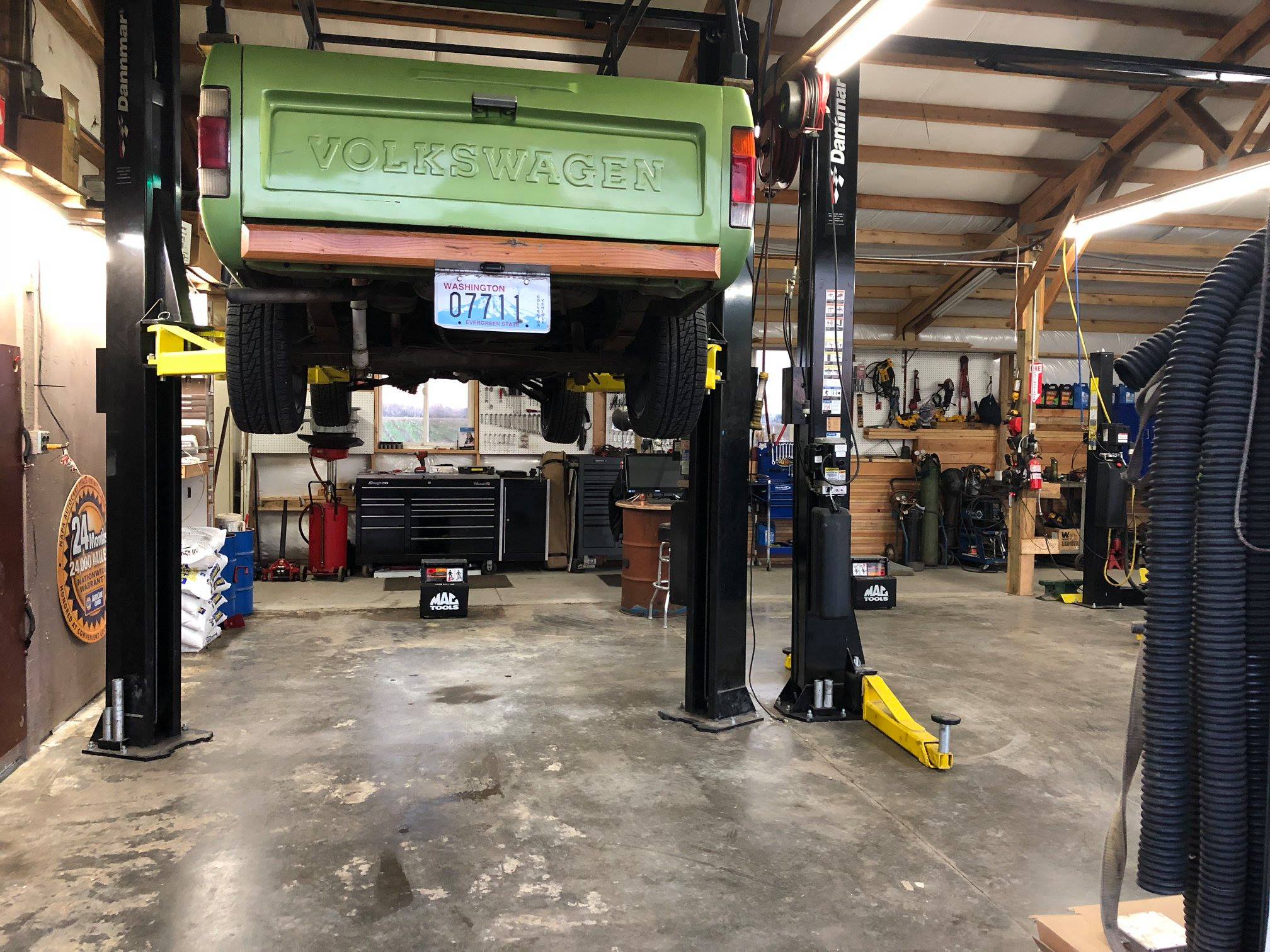
You’ll need to invest some money in purchasing equipment and business licenses to start a car shop. Lucky has an interesting story about how he started his business:
While the way he started his business with a unique source of funding, he estimated the cost to start today would be:
He also told us:
Let’s look at the startup costs.
Breakdown of Startup Costs
You’ll need to invest in the following items before starting an auto repair shop:
- Limited Liability Company (LLC) or Corporation: $1,000 or less in most states. Both an LLC and a Corporation separate personal assets from business assets as long as you have a business bank account. Check out our blog about business structures to learn more.
- Business Licenses: $200 to $3,000. You’ll have to check with your state, county, and city governments for exact pricing and licensing requirements. Learn how to get a business license.
- General Liability Insurance: $500 to $3,000 per year. Alternatively, you can choose the next option:
- Business Owner Policy: $500 to $3,000 per year. Combines general liability and commercial property insurance. Make sure to purchase insurance. Check out Simply Business for easy to purchase plans.
- Workers Compensation: $500 to $4,000 per year, median $1,667.
- Commercial Auto Insurance: Median cost $778 per year. (All insurance pricing is based on this Insureon blog.)
- Specialty Tools: Rates vary, but you can rent many tools from Autozone until you can afford to buy them.
- Diagnostic Tools: $25 to $10K+. Used to test the vehicles to see what codes and issues they are having. It can also be used for tuning. High end or Affordable options are available. Obviously the high end ones have more features and precision.
- Professional Lift: $5,000 to $40,000 depending on height and weight requirements.
- Parts budget: Rates vary, and new parts can cost from $15 for brake pads to $20,000+ for some engines.
- Shop: $1,750+ a month for rent and utilities.
- Total: $10,753 to $100K+ for all items as shown here.
- How to start a mechanic shop at home
Some states may allow you to start auto repair shops from home, but you’ll need to check state and city rules in your area. More often than not, apartment complexes have specific rules against it, as do many homeowners associations.
You can cut the cost down to probably $5K for those wondering how to start a mechanic shop from home.
What permits do I need to open a mechanic shop?

You’ll want to consider the permits for starting an auto repair shop, too. You’ll want to get the following:
Sales Tax Permit: A permit is required to pay taxes when you sell goods (and sometimes services. Some states do not tax services).
Resale Permit: A resale permit allows you to exclude taxes from your purchase price. Alternatively some states don’t make you pay tax if you paid the sales tax on the goods, but talk to an accountant to make sure.
Hazardous Waste Permit: You may be required to get a hazardous waste permit or pay a fee for disposal. Even if you aren’t, you may need to keep documentation. Here is a 50 state guide to laws for mechanic shops.
State and Local Business Licenses: There may be different requirements for different types of automotive businesses. Check with the local Small Business Administration (SBA) to find out what you need. You can find a list of SBA offices on the website.
Get a Business Bank Account
Get a business bank account to protect your business idea and personal assets, and get a bank loan. To raise money through loans or stock shares, you have to keep your personal finances and business finances separate. The best bank accounts to get will vary for each business, but small banks and credit unions tend to have better approval odds and customer service for business loans. As a business owner, it’s also important to consider their personal relationship with you.
Learn how to open a business bank account.
Get Accounts with Suppliers

Every vehicle that you repair will need parts, and you’ll often have to get them from local suppliers or dealerships. If there are none locally, you may have to order them from online retailers or larger wholesalers. Some of the larger scale parts shops that mechanic shops use include:
- AutoZone Pro: Get parts through AutoZone with special rates, marketing materials, and apply for OnDeck financing to get Net30 terms.
- O’Reilly First Call: This is the site for shops to use on O’Reilly’s website.
- Advantage Part Systems: An OEM wholesaler
Wikipedia has a list of 40 other potential suppliers. Like any industry, it’s a good idea to get bids from at least three places to get the best value.
Choose an Auto Repair Business Location
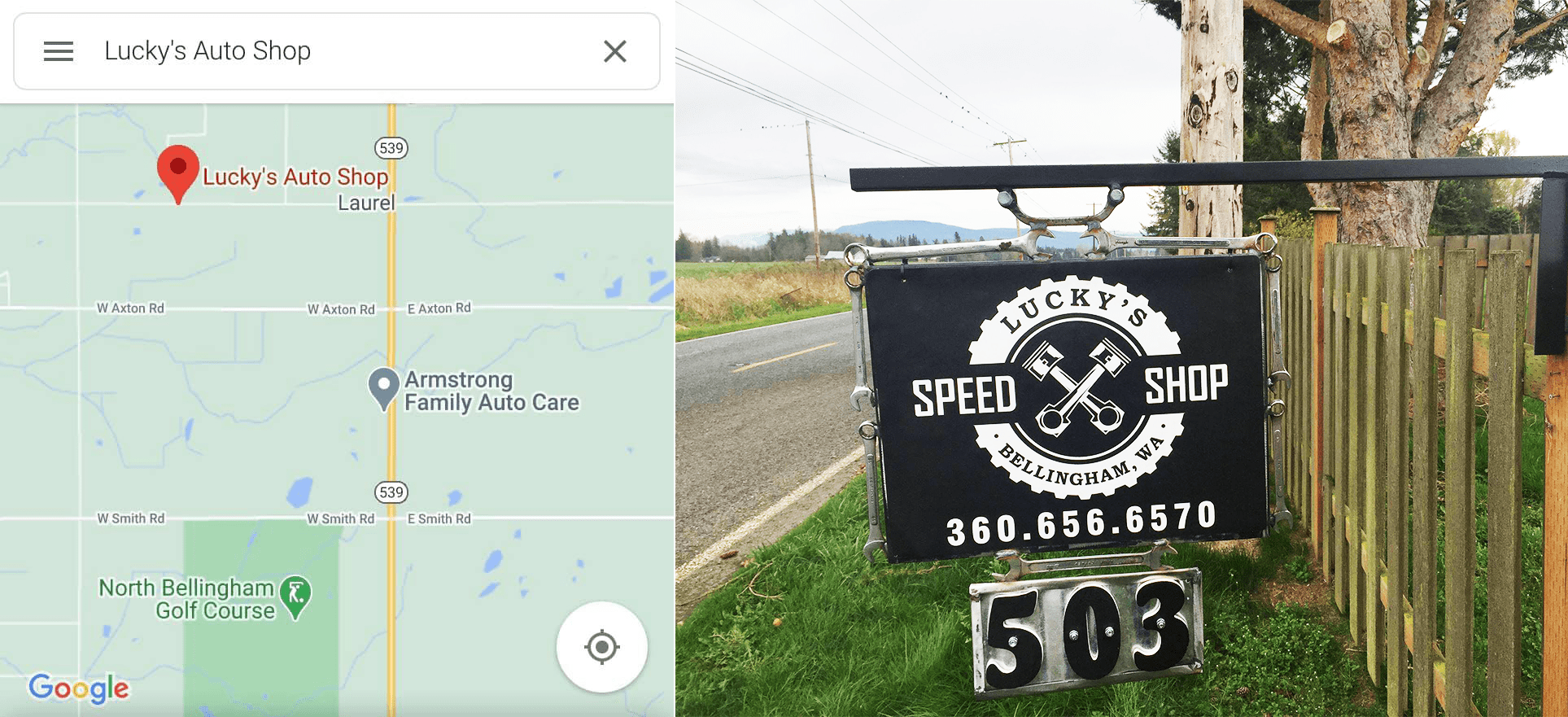
Automotive repair shops will normally need a location to repair cars. Before you start a mechanic shop consider:
- What is to be the amount of traffic around your car repair shop?
- Is there enough parking to handle existing and new customers?
- Does the car repair shop have enough space for the number of car ports you need? There are typically one to eight car ports in small businesses, but you may need drastically larger numbers if your automotive business contracts with:
- A local taxi company
- The police department
- A limousine service
- Car dealerships (which sometime have 24 to 36 of their own)
- The price of the space matters. Industrial and lower traffic areas tend to have lower rent.
Lucky told us:
He also told us that he is looking for a new space. He told us:
Once you have the space, you’ll need to prepare your new business for the grand opening.
How to Open Your Own Car Repair Shop
In this section, we’ll discuss setting up your software, tools, and marketing, so that you’re prepared to start serving new customers
How to Open Mechanic Shop: Software Used
You’ll need software to manage your own auto repair shop. Fortunately, Lucky gave us input on what he uses in his car workshop. He suggested the following software to start auto repair shop operations.
Website
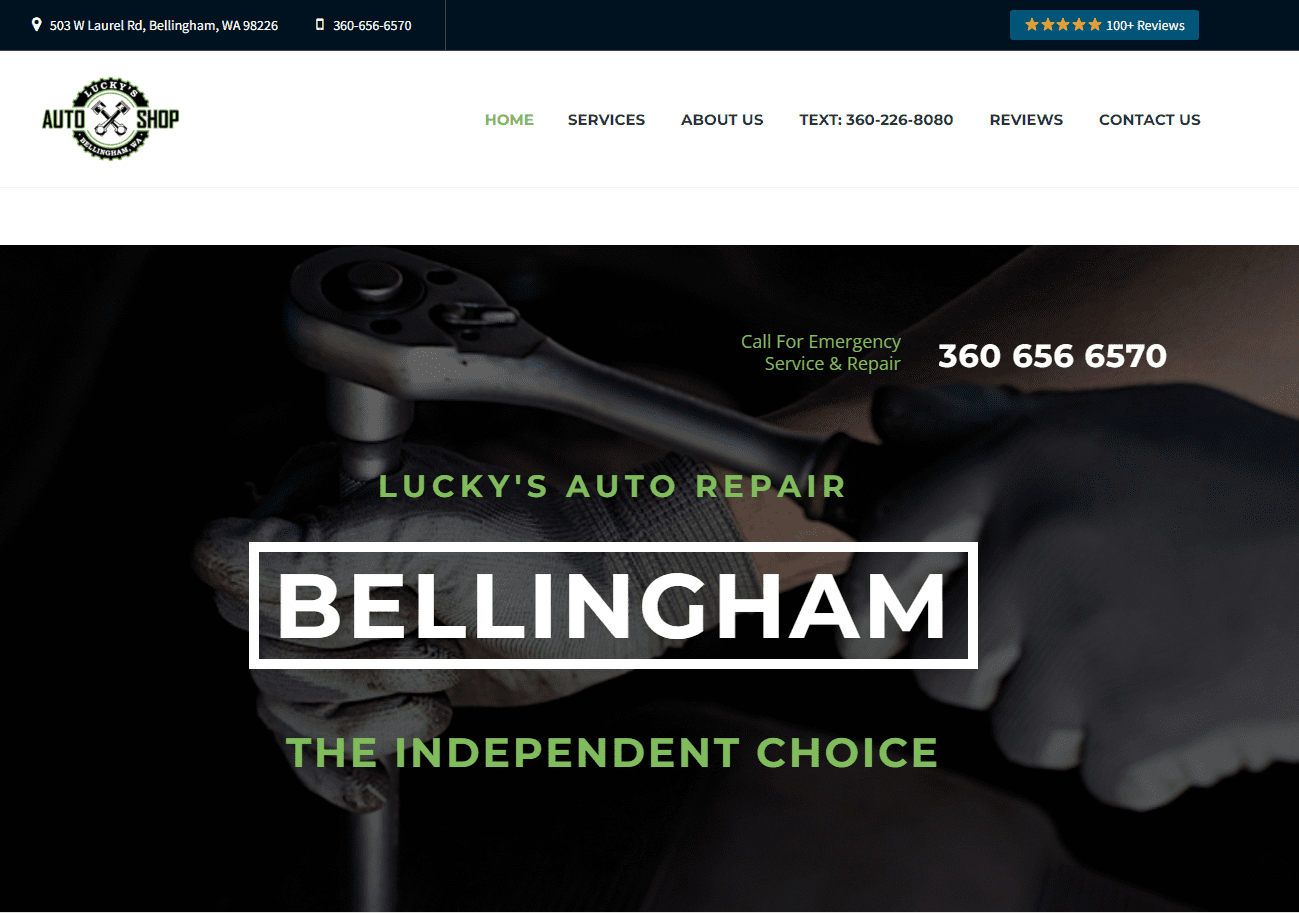
You’ll need a website with relevant pictures, your address, services, phone numbers, and appointment requests. Lucky told us:
You can use a free website builder like WordPress or Wix, but make sure you buy a custom domain so that everything isn’t branded with the website builders logos, which looks unprofessional.
The following is a list of software running on https://luckyautoshop.com/:
- OWL Carousel: For pictures
- Google Tag Manager: For tracking what occurs on the site
- Tawk.to: Customer support agents for $1 per hour
- Google Analytics UA: Web Tracking
- CloudFlare CDN: Provides fast access to content
- CDN JS: Provides fast access to content
I’ve left off coding tools because you’ll find standard ones on most sites. If you love a specific site, check out WhatRuns to find out what they use.
In addition to the website, Lucky Auto Shop uses additional software for customer support.
Mitchell1
Mitchell1 offers four main products:
- ProDemand® Optimized with SureTrack®: Diagnostic machine software helps diagnose cars including top 10 issues by vehicle, partners needed, and wiring diagrams.
- Manager™ SE: Custom Relationship Management software helps keep track of existing customers spending and prior work, pre-diagnosing the type of repairs needed to help technicians diagnose the vehicle, and manage invoicing and parts.
- TruckSeries: This is used for Medium and Heavy Duty Trucks. If your shop specializes in Class 4 to 8 trucks, you’ll need this to help reduce repair time and increase revenue.
- SocialCRM: Use this to manage the social aspect of running your own business. This includes customer reviews, preventive maintenance reminders, promotions, and other marketing automations.
Based on the interview, it appears that Lucky utilizes the manager SE and ProDemand®. He said:
He also told us that Quickbooks was what he used until he could afford more sophisticated software.

He also use a program that helps tune up shops show repairs needed.
Bolt On Technology
Lucky uses software called Bolt On that helps with digital inspections that he connects to the estimates. They use Bolt On software to include images in the invoices. It helps auto repair shops increase ticket revenue by 39%, builds trust, and increases return visits.
Lucky also told us how much he spends on monthly software subscriptions.
Let’s talk about tools next.
Arrange Your Space
You’ll want to set up your mechanics workshop where it’s easy to bring a car for repair. In addition, here’s some business advice to help run a high performing shop:
- The tools should be convenient, but out of the way where technicians can move around the cars freely.
- Have a specific dock for oil changes, battery replacement, and other quick jobs. They shouldn’t have to wait while you are changing out an engine.
- Tool boxes should have locks and be locked at the end of the night.
- Always have an alarm system in case vandals or robbers break in.
- Make customer spaces comfortable. Provide a seating space, reading materials, a TV, a restroom, drinking water, and maybe a vending machine.
Marketing Your Car Repair Shop

You’ll need to have a marketing strategy in place to help increase your business. Part of the marketing strategy should include:
- Logo
- Building signs
- Vehicle signs
- Company letterhead for invoices and other communication
- Brand messaging guidelines
- Communication channels
- Brand colors and font specification
- Marketing analytics
- Branded pens (These are a cheap way for any business to get their name out because people tend to take pens, plus you can get them for less than $1 per pen for less than $500.)
Most mechanic shops only spend about 2% on marketing to find potential customers. You have lots of options with your own business. You can:
- Use social media
- Partner with other businesses
- Pay for leads on Google Local Ads
- Create videos on how to fix cars
- Use print ads in local papers and billboards
- Try Lucky’s method:
You can also try Broadly to build your online presence. They sponsored our interview with Lucky. In a year, the service increased Google reviews five- fold and increased revenues 5% based on a user testimonial.
Next, we’ll discuss hiring employees.
How to Open Your Own Mechanic Shop: Employees

A business owner can run a mechanic shop by themselves, but how many customers can they help? Will they be able to make a profit if they do everything in their own shop?
The average wages for employees at shops is only $37,000 according to IBIS and the revenue per employee is around $128K, so adding an employee would be a net gain of nearly $90K. That’s enough to make the difference between a profitable business and one that loses money.
Lucky has three employees and told us:
Lucky also explained that he doesn’t have a formal training program because all his employees have experience, but he trains them as needed and invests a lot in ongoing education.
Now that you’re ready to start serving customers, we’ll walk you through the process.
Mechanic Garage Customer Service
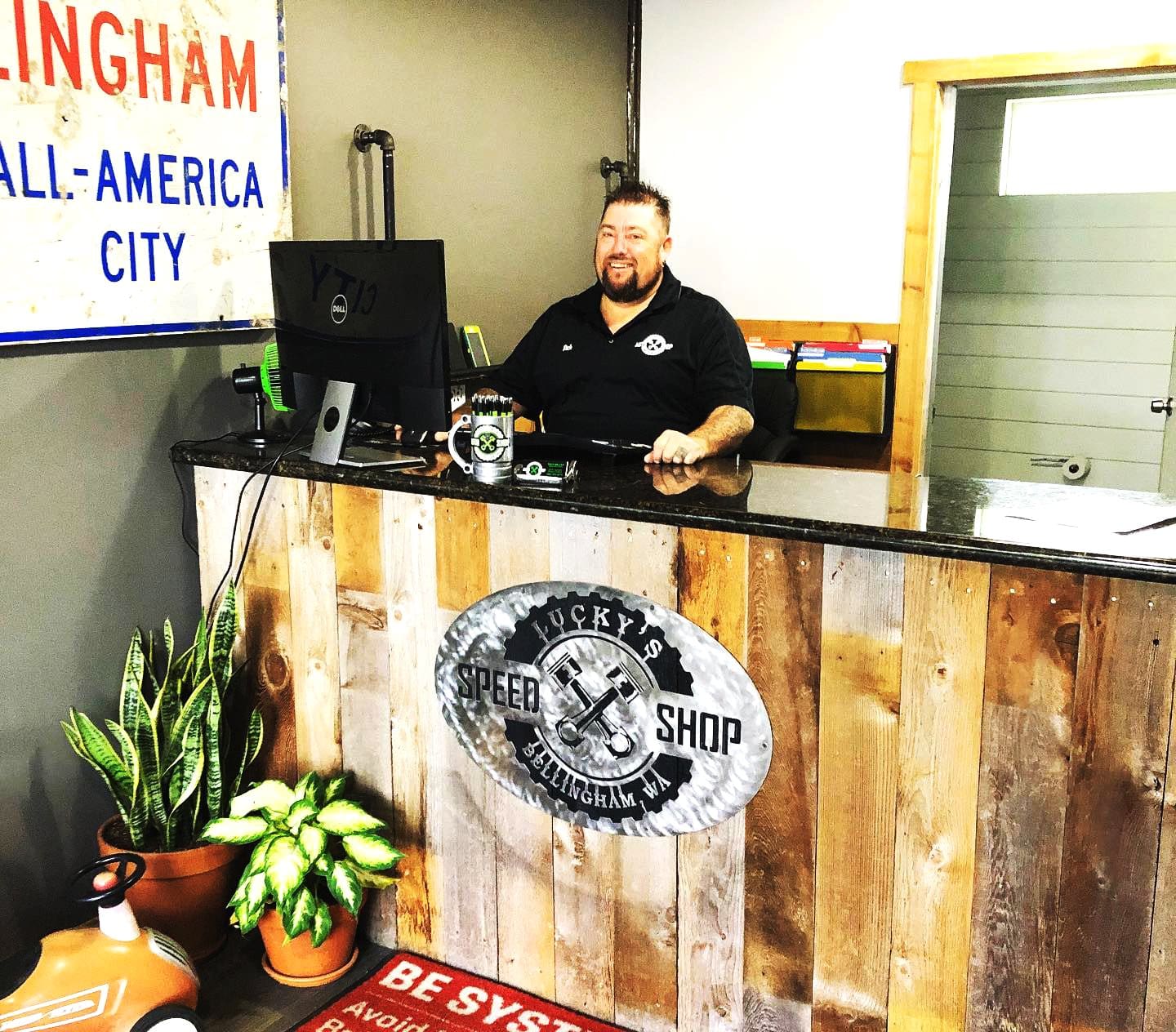
An auto repair shop will have a process similar to the one below:
- Customer is added to the system
- Complimentary inspection (body, wheels, suspension)
- Get quotes for parts from vendors
- Provide an estimate
- Get approval
- Buy parts
- Put the vehicle on the lift
- Perform the work
- Accept payment and ask for reviews
Lucky added information about their CRM and how they prioritize customers who are waiting at the shop over those who leave while the car repairing takes place. He told us to always prioritize those who are at the business waiting.
How to Start a Mechanic Shop: The Keys to Success

When we asked Lucky what he attributes his success to, he responded with:
- Hiring the right people
- Customer service
- Asking for reviews
Lucky emphasized you want to look for people who care about the business. They have to have the necessary skills, but it’s easier to teach someone technical skills than it is to teach them to care. This is what he said.
You can have the right technology, but if you don’t have people who can use it, the business will fail.
He also talked about the importance of including your team.
He also explained that customer service was hard at first. When he was less experienced, he would get upset when he had to pay for a misdiagnosis. Over time, he learned that giving great customer service is more important. He said that:
Finally, he told us his approach to quality control and customer reviews:
Pay Your Bills
You’ll have to pay monthly expenses to keep your business operating. You’ll want to make sure to pay:
- Lease payments
- Payments on any bank loan for business assets
- Utilities
- Business insurance costs
- Suppliers
- Payroll taxes
- State and federal taxes
- Annual business license and business structure fees
Live Mechanically Ever After…
That’s our journey. Now you know how to start a mechanic shop. Have you opened an automotive repair shop before? If so, how many cars did you repair per day? What mistakes did you make?
For those who haven’t opened an auto repair shop, what do you look for in a mechanic shop?




